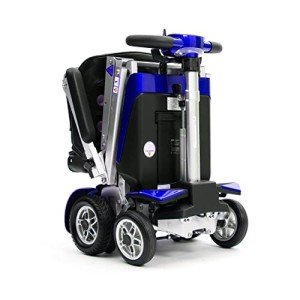A Comprehensive Guide to Buying a Mobility Scooter
Mobility scooters have ended up being an important tool for numerous people seeking to improve their self-reliance and mobility. With a huge variety of models and functions available, choosing the right mobility scooter can be intimidating. This post provides a useful guide to help customers navigate their choices, assess their needs, and make an informed purchase.
Comprehending Mobility Scooters
Mobility scooters are electric automobiles designed for people who experience mobility obstacles. They are particularly useful for elders, those with disabilities, or individuals recuperating from injuries. Mobility scooters can differ commonly in regards to style, functions, and rates.
Kinds Of Mobility Scooters
Before starting a purchase, it's vital to comprehend the different kinds of mobility scooters available:
Three-Wheel Scooters:
- Generally more maneuverable in tight areas
- Lightweight and portable
- Ideal for indoor usage
Four-Wheel Scooters:
- Offer higher stability and balance
- Ideal for outside usage over numerous surfaces
- Usually have a longer battery life
Foldable/Portable Scooters:
- Designed to be easily carried and stored
- Can typically suit the trunk of a car
- Suitable for those who travel frequently
Durable Scooters:
- Built to accommodate larger people
- Typically featured more robust functions for outside use
- Usually equipped with larger batteries for extended variety
Aspects to Consider When Buying a Mobility Scooter
1. Weight Capacity
Select a mobility scooter that can support the user's weight. A lot of scooters have a weight limit varying from 250 to 500 pounds. It is essential to guarantee that the scooter can accommodate the user comfortably.
2. Variety and Battery Life
The range is how far the mobility scooter can take a trip on a single charge. Common ranges differ in between 10 to 30 miles. Consider the user's everyday activities and choose a scooter with an appropriate range.
3. Scooter Dimensions
Think about the size of the scooter, including its weight and dimensions. A more compact scooter might be perfect for narrow hallways and tight spaces, while bigger models offer extra stability and comfort.
4. Surface Capability
Evaluate where the scooter will mostly be used. If the user plans to travel primarily on pavement, a lightweight design may be sufficient. Nevertheless, if the user needs to pass through gravel or uneven surfaces, consider a four-wheel scooter developed for off-road usage.
Top Features to Look For
Convenience
- Adjustable Seats: Look for scooters with cushioned and height-adjustable seats to guarantee comfort throughout travel.
- Armrests: These enhance security and assistance while browsing.
Safety and Visibility
- Headlights and Taillights: Essential for nighttime use.
- Turn Signals and Reflectors: Improve visibility and security while on the roadway.
User-Friendly Controls
- Joystick or Drive Controls: These ought to be instinctive and simple to manipulate.
- Easy-to-Read Displays: A control panel that reveals battery life, speed, and range can enhance the user experience.
Additional Features
- Storage Compartments: These offer added convenience for bring personal items while on the go.
- Weather Protection: Consider designs with rain covers or windshields if used in variable climate condition.
Expense Considerations
When budgeting for a mobility scooter, rates can vary anywhere from ₤ 500 to over ₤ 5,000 depending on the model, features, and brand. Extra costs may consist of:
- Extended Warranty: Protects versus defects and can conserve cash in the long run.
- Devices: Optional functions, such as updated seats, lights, or storage options.
| Feature | Cost Range |
|---|---|
| Standard Models | ₤ 500 - ₤ 1,500 |
| Mid-Range Models | ₤ 1,500 - ₤ 3,000 |
| High-End Models | ₤ 3,000 - ₤ 5,000 |
Funding Options
Numerous retailers offer financing plans, and some city government efforts may offer grants or help for those in need. Investigate prospective monetary assistance with neighborhood resources or mobility service organizations.
Frequently asked questions about Buying a Mobility Scooter
What is the difference between a mobility scooter and a wheelchair?
Mobility scooters are motorized and enable users to navigate independently, while wheelchairs might require physical help or manual operation.
How do I maintain a mobility scooter?
Routine upkeep involves checking battery life, cleaning up the scooter, and checking tires and brakes. Constantly describe the user handbook for specific standards.
Can mobility scooters be utilized indoors?
Yes, lots of designs are designed for both indoor and outdoor usage. Nevertheless, three-wheel scooters tend to be better suited for indoor navigation due to their tighter turning radius.
Are mobility scooters covered by insurance coverage?
Some insurance prepares cover a part of the costs for mobility scooters if they are considered clinically required. Contact why not find out more for particular details.
How quickly can a mobility scooter go?
The majority of mobility scooters have an optimal speed ranging from 4 to 8 mph. However, the proper speed might differ depending upon regional regulations.
Buying a mobility scooter can considerably boost one's independence and lifestyle. By understanding the types, features, and costs connected with mobility scooters, prospective purchasers can make educated choices that match their needs and preferences. Customization and extensive research study are key to making sure satisfaction with this essential financial investment.

